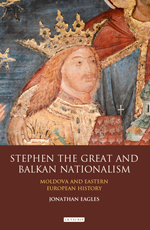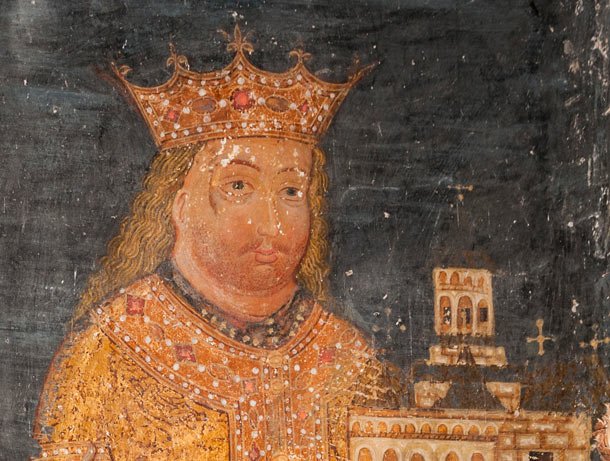Shifting borders, migration, and language experiments
The division of the Principality of Moldova in 1812 initiated a series of complex alterations to boundaries, linguistic practices, and population migrations.
These factors contributed to the erosion of the concept of ‘Moldova’ and continue to influence present-day tensions in southeastern Europe.
Russian Expansion and the Transformation of Moldova in the 19th Century
As the Russian Empire expanded westward in the late 18th century, it capitalized on the Ottoman Empire’s weakening in southern Europe.
This led to acquiring a part of Moldova and control over the Black Sea. The Treaty of Bucharest, dividing the Principality along the river Prut, resulted in the eastern region becoming a Russian oblast named ‘Bessarabia.’
Meanwhile, the western part remained under Ottoman influence. However, as the 19th century progressed, Iaşi, the Moldovan capital, became a hub for political activism advocating for Romanian national unification.
The pivotal moment occurred in 1859 when Alexander Ioan Cuza was elected prince of Moldova in Iaşi, initiating the process of Romanian unification completed after the First World War.
Bessarabia’s Turbulent History: Identity Struggles and Political Aspirations
East of the Prut, Bessarabia’s Romanian-speaking population faced ‘Russification’ during Tsarist rule and severe Stalinization post-World War II.
Incorporated into Greater Romania between wars, Bessarabia’s ‘Greater Romania’ aspiration persisted in post-communist southeastern Europe.
Freed from the USSR in 1991, Bessarabia became the Republic of Moldova, weighing reunion with Romania or forging a new identity.
Contrary to expectations, the Republic opted for independence. Economic challenges in the post-communist era, exacerbated by the worldwide economic crises, hindered the prospects of unification.
Moldova, dubbed ‘the poorest country in Europe,’ faced significant economic struggles, while Romania experienced mixed fortunes before its EU accession in 2007. Moldova’s Romanian heritage, encompassing language, history, and material culture, proved insufficient to overcome the enduring complexity of the country.
Moldova Complex Geopolitical Landscape
The Republic of Moldova’s internal geography reveals persistent political development disruptions from historical strains. The Moldovan government’s authority doesn’t extend uniformly across its territory.
In the east, the peculiar secessionist area of Russian-speaking ‘Transnistria’ is locked in a Stalinist time warp.
Likewise, in the southwest, the semi-autonomous Gagauz region, granted autonomy for its Turkic ethnic minority, arose from civil conflict in the early 1990s.
These divisions hinder Moldova’s economic prospects and challenge EU aspirations among many in Moldova’s political class.
Contemporary fractures align with long-term threats to Moldova as a political entity. The 1812 partition addressed a persistent threat looming since the Principality’s formation in the late Middle Ages.
Moldova’s medieval Romanian polities faced pressure from the great powers, evident in a 1412 treaty between Poland-Lithuania and Hungary.
This treaty obligated Moldova to provide military assistance to Hungary under the threat of partition between Catholic kingdoms for non-compliance.
Symbolic Struggles: Prince Stephen the Great and Moldova’s Identity Quest
The Republic of Moldova aims to establish a unique 21st-century identity amid external threats and internal divisions.
A notable avenue in this pursuit involves the selection of state symbol and hero—Prince and Saint Stephen the Great.
Furthermore, Stephen’s key role in the 15th-century Moldovan Principality is associated with historical sites west of the Prut, now in northeastern Romania and southwestern Ukraine.
Interestingly, Stephen has become a national symbol in Moldova east of the Prut, exemplified by his central statue in Chişinău.
Also Read: Joel Osteen Religion And Ethnicity: Is He Christian Or Muslim?
Moldova Anomalous Status And Symbolic Significance
Central Chişinău, marked by Stephen’s statue, is a symbolic focal point for Moldova. The statue is not merely a monument; it is the site for national ceremonials, a place where newlyweds lay flowers, and a gathering spot for protesters.
In the 2000s, the reformed Communist government strategically promoted Stephen as the embodiment of independent Moldova.
Despite Stephen’s significance in Romanian heritage, he now symbolizes Moldova’s unique identity.
This reflects challenges in border navigation, cultural sharing with neighbors, and addressing the Moldovan polity’s legacy.
As calls for ‘Greater Romania’ and ‘Greater Moldova’ have diminished, the Republic of Moldova continues to grapple with its anomalous status and the imperative to solidify its national identity.
 Jonathan Eagles holds a PhD in Archaeology and Medieval History from University College London. His new book is Stephen the Great and Balkan Nationalism.
Jonathan Eagles holds a PhD in Archaeology and Medieval History from University College London. His new book is Stephen the Great and Balkan Nationalism.


